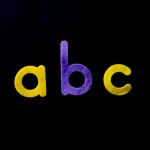 A song is a group of similar and contrasting sections (stanzas). The first section you hear is “A” (verse). The second is “B” (chorus or bridge). The third is “C,” and so on. If you repeat a section of music, even if the words are different, it’s still given the same letter. The three most popular combinations are AAA, ABAB, and AABA.
A song is a group of similar and contrasting sections (stanzas). The first section you hear is “A” (verse). The second is “B” (chorus or bridge). The third is “C,” and so on. If you repeat a section of music, even if the words are different, it’s still given the same letter. The three most popular combinations are AAA, ABAB, and AABA.
AAA is used in many hymns and folk songs. The title is usually in the first or last line of each verse (A). The same section of music is sung again and again with different words each time. It works well for self-contained stories (this “A” happened, then that “A” happened, etc.) and list songs (there’s this “A,” then there’s that “A,” etc.). One caution is to avoid letting the repetition make the song feel like it’s in an endless loop. Build the excitement of the self-contained story or the impact of the items on the list.
Examples include “Amazing Grace” by John Newton (sung by Judy Collins), “Kansas City” by Richard Rodgers and Oscar Hammerstein II (from Oklahoma!), “I Walk the Line” by Johnny Cash, “On Broadway” by Jerry Leiber and Mike Stoller (sung by George Benson), “Nothing” by Marvin Hamlisch and Ed Kleban (from A Chorus Line), and “Born in the U.S.A.” by Bruce Springsteen.
ABAB is used in many pop songs. The song’s story is told in the verses (A), which alternate with the same chorus (B). The title is usually in the first line of the chorus. It can illustrate cause and effect (this “A” caused “B,” then that “A” caused “B,” etc.) or an argument (there’s this “A” but also “B,” then there’s that “A” but also “B”). One caution is to avoid letting the song feel like a seesaw without a clear outcome or emotional build.
Examples include “With a Little Bit of Luck” by Alan Jay Lerner and Frederick Loewe (from My Fair Lady), “California Girls” by The Beach Boys, “Sunrise, Sunset” by Jerry Bock and Sheldon Harnick (from Fiddler on the Roof), “Candle in the Wind” by Elton John and Bernie Taupin,” “I Wanna Dance with Somebody” (sung by Whitney Houston), and “Oops, I Did It Again” (sung by Britney Spears). For more AAA and ABAB (verse-chorus) songs, watch Rob Hartmann’s playlist.
AABA is used in many Broadway songs. The title is usually in the first or last line of each verse (A), in the same part of the line. The bridge (B) contrasts with the verse by using different chords, melody, and lyrical focus. It works well to show the development of an idea or a dramatic moment, with the bridge serving as a short side road that either lightens or darkens the emotional trajectory. One caution is to make sure the bridge, that light or dark side road, logically appears along the emotional path laid by the previous sections.
Examples include “Ol’ Man River” by Jerome Kern and Oscar Hammerstein II (from Show Boat), “Over the Rainbow” by Harold Arlen and Yip Harburg (from Wizard of Oz), “So in Love” by Cole Porter (from Kiss Me, Kate), “Crazy” by Willie Nelson (sung by Patsy Cline), “Yesterday” by The Beatles, and “What I Did for Love” by Marvin Hamlisch and Ed Kleban (from A Chorus Line). For more AABA songs, watch Rob Hartmann’s YouTube playlist.
Choose the structure that works best for each of your songs, then starting refining the image organization.
Next, the rhymes.
